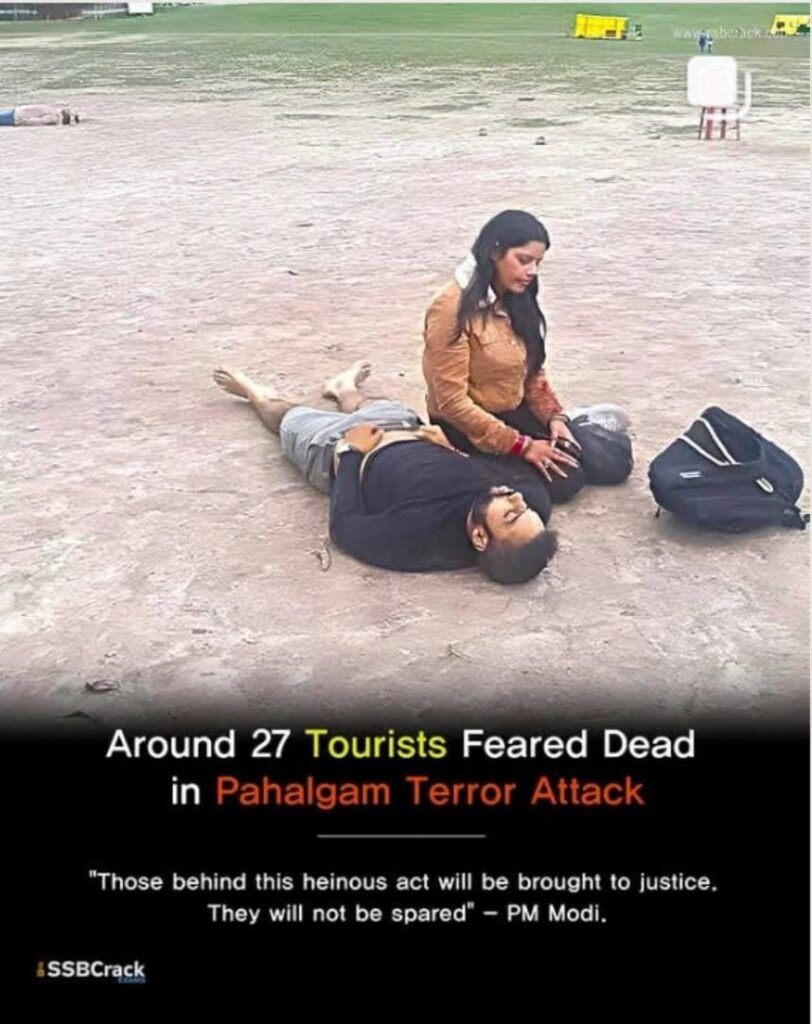
In the early hours of May 7, 2025, the world woke up to a thunderous message from India. Operation Sindoor wasn’t just another military operation — it was India’s most decisive counter-terror strike in years, designed to cripple the terror ecosystem festering across the border.
But what really happened? What led to this bold step? And what does it mean for India and the region? Let’s break it down.
⚡ The Trigger: The Pahalgam Horror
On April 22, 2025, terrorists attacked a tourist bus in Pahalgam, Kashmir, leaving 26 people dead, including women, children, and security personnel. The attack wasn’t just a tragedy; it was a provocation.
Evidence quickly pointed to Pakistan-based terror groups, especially Jaish-e-Mohammed (JeM) and Lashkar-e-Taiba (LeT). The Indian public was outraged. Candlelight vigils turned into protests, and the call for action echoed from streets to Parliament.
India had to respond — but this time, not with words or warnings.

🚀 Operation Sindoor: Anatomy of the Strike
Unlike past retaliations, Operation Sindoor was designed for scale, speed, and surgical precision.
- Duration: ~25 minutes
- Forces involved: Indian Army, Navy, Air Force (tri-services operation)
- Weapons used: SCALP cruise missiles, Hammer bombs, drones, precision-guided munitions
Targets hit:
- JeM’s headquarters in Bahawalpur
- LeT’s main base in Muridke
- Three launchpads in Pakistan-occupied Kashmir (PoK)
- Additional camps in Mansehra, Khyber Pakhtunkhwa
Intelligence reports suggest:
- ~70-80 terrorists eliminated
- 10 family members of Masood Azhar (JeM chief) killed
- Several mid-level commanders neutralized
🕶 Planning the Impossible
What makes Operation Sindoor extraordinary is the planning.
- Months of surveillance:
Indian intelligence agencies worked closely with Israeli and US counterparts to track camps, movements, and leadership meetings. - Deception tactics:
While global attention was on political tensions, Indian forces rehearsed the mission under the guise of routine exercises. - Technology edge:
AI-enabled drones, satellite mapping, and real-time ground intelligence gave India unprecedented situational awareness.

🌍 International Reactions: Mixed But Mostly Supportive
- Israel: Unwavering support, calling India’s right to self-defense “legitimate.”
- France & US: Called for calm but acknowledged India’s “measured precision.”
- China: Urged restraint, concerned about regional escalation.
- Pakistan: Denied damage, called it “fabricated Indian propaganda” — but local media reported large funerals in terror hubs.
The global takeaway? India has redefined the red line.

🛡️ Strategic Impact: More Than Just Revenge
This isn’t just about revenge — it’s about shifting India’s defense doctrine.
✅ From reactive to proactive
✅ From cross-border skirmishes to deep-strike capability
✅ From restraint to deterrence
For decades, India absorbed terror attacks while keeping conventional war off the table. Sindoor changes the rules. It signals that India will no longer wait to be attacked; it will strike preemptively if its citizens are threatened.

💔 The Human Story: Justice for Pahalgam
Perhaps the most powerful image is the Pahalgam martyrs’ families watching the news, tears in their eyes — not of grief, but of closure. Mothers who lost sons, children who lost parents — they all waited for this moment.
As one survivor put it:
“We can never bring them back, but at least now, the world knows we will not be silent victims.”

🚨 Risks Ahead: What Comes Next?
- Escalation risks: Will Pakistan retaliate? So far, it has only issued diplomatic protests, but tensions remain high.
- Terror fallout: Splinter groups may attempt revenge attacks. India’s security forces are on high alert.
- Diplomatic balancing: India needs to engage the international community to keep the narrative on its side.
🌟 Why ‘Sindoor’?
The name Sindoor (vermilion) symbolizes two things in Indian culture:
- The sacred mark of marriage, often applied as a sign of protection and commitment.
- The blood of martyrs, signifying sacrifice for the nation.
This mission honored both — the duty to protect and the cost of sacrifice.

💬 Final Thoughts: A New Chapter in India’s Fight Against Terror
Operation Sindoor marks a turning point — not just in military strategy, but in national resolve.
It tells the world that India is ready to defend its people with precision, boldness, and unity.
As citizens, we owe a debt of gratitude to the armed forces who risked everything to deliver justice.
And as a nation, we must stand united — beyond politics, beyond divisions — to honor their sacrifice.
👉 Your turn: What does Operation Sindoor mean to you?
Share your thoughts in the comments. Let’s keep the conversation going — because this moment belongs to all of us.
Drop your thoughts in the comments — let’s discuss how India’s bold new stance will shape the future.





















